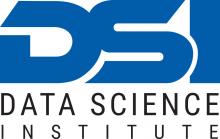Sometimes it's easy to predict from a project's description what the impact of the research will be, and the "Awards" and "Journal Covers" sections of this overview provide some follow-up by illustrating how LDRD research has actually been received by the scientific community and the media. Arguably, the more interesting though less often told stories are about the long-term impacts of LDRD research, be it a single project or the sustained investment in a topic over time.
The two stories below each shine a light on the value of sustained investment in a nascent or burgeoning field. In both cases, LDRD investment began with a broad vision of how building LLNL's capabilities in a new area of science and technology could be of strategic use in better achieving national missions. Driven by a spirit of innovation, scientists and engineers delivered basic science discoveries and developed next generation mission solutions. In both stories, as is often the case, sustained investment led to more than just technological breakthroughs; it led to a body of knowledge that laid the groundwork for new mission-focused capabilities that further evolved into centers for external collaborations.
LDRD Investments Lead to an "Open Campus" Advanced Manufacturing Laboratory
Advanced manufacturing—a field that incorporates novel materials, additive manufacturing, and high-performance computing (for design models, simulations, characterization, and more)—is an area of rapid growth in industry, fueling the development of innovative products from customized medical implants to high-performance car parts and more. Advanced manufacturing is also a new tool for meeting NNSA missions in national security, energy security, and perhaps most critically, stockpile stewardship. Beginning in 2012, LDRD funded a body of research that formed the foundation of an entirely new capability, including numerous patents for novel materials, tools, and manufacturing processes. It's impact on mission? "We're already seeing significant decreases in manufacturing cost and footprint, improved flexibility, and products and components that are vastly superior to those obtained through traditional manufacturing," said Engineering Associate Director Anantha Krishnan.
Early support from LDRD gave the Laboratory a leading edge in this rapidly evolving field, one way to maintain that edge is to learn from others, specifically with regard to transferring this technology to industry. Toward that end, in the summer of 2018, LLNL opened the Advanced Manufacturing Laboratory (AML), a $10 million, 14,000-square-foot facility located in the Livermore Valley Open Campus (LVOC), a cluster of buildings just beyond the borders of LLNL that are designed to facilitate collaborations with academic and industry partners. This first-of-its-kind facility features a large wet lab where three-dimensional printing, materials research, chemical work, carbon capture technology, and other research activities can be performed. A 5,000-square-foot dry lab houses industrial-size manufacturing machines, including laser powder bed fusion and diode-based metal additive manufacturing systems, with space for metrology and characterization as well.
According to Chris Spadaccini, LLNL's Director of the Additive Manufacturing Initiative and an early LDRD researcher in the field, the AML is a result of the Laboratory's desire to improve responsiveness and learn from external partners by actively pursuing collaborations with industry and academia that could benefit both parties. "We're looking for equal investors and complementary "spin in/spin out" projects where we can help companies and vice versa….It's not a pay-to-play facility. We hope and expect that this will accelerate development of advanced manufacturing technology that will benefit both our external partners and our internal programs. We expect students and postdocs to be here and see this as a recruiting pipeline as well. We hope our partners will help guide AML's future, and we want to learn as much from them as they do from us."
LDRD Investments Lead to a Data Science Institute
Machine learning. Deep learning. Artificial intelligence. Computer vision. Big data analytics.
These aren't just techie buzzwords—they're all areas of research that fall under the sweeping term "data science," a field that underpins some of the most powerful antiterrorist and antiproliferation tools currently under development at LLNL.
Launched earlier this year, the Data Science Institute (DSI) is an organization designed to bring together myriad topics considered "data science" under one umbrella, establishing a centralized hub for education, collaboration, and the building of a workforce pipeline that targets soon-to-be college graduates. The DSI, which includes over 150 data scientists at the Laboratory, was built, in large part, on a body of research sustained by LDRD since 2012.
Peer-Timo Bremer, a member of the Data Science Council, explained that because data science is so "cross-cutting" and difficult to define, the DSI was a necessary step, not just for the benefit of Laboratory scientists, but for those outside the gates as well. He pointed to large-scale collaborative projects such as ATOM (Accelerating Therapeutic Opportunities in Medicine), which seeks to use machine learning and data analytics to enhance precision medicine and speed up drug development in response to biothreats, and the ADAPD (Advanced Data Analytics for Proliferation Detection) projects, aimed at developing advanced machine learning algorithms to help detect nuclear proliferation indicators earlier, more thoroughly, and more robustly than ever before. The algorithms will combine cues from multiple sensor measurements to detect patterns too subtle or too noisy to be detected from any one sensor alone.
According to DSI Director Mike Goldman, other ongoing projects apply data science to research in materials science using machine learning to predict performance, cognitive simulation for stockpile stewardship, basic science, advanced manufacturing, and energy and climate security. "The problems we work on here are unique and challenging and difficult, and we use data you're not going to see anywhere else," Goldman added. "Also, you've got the computing power here to utilize that data."







